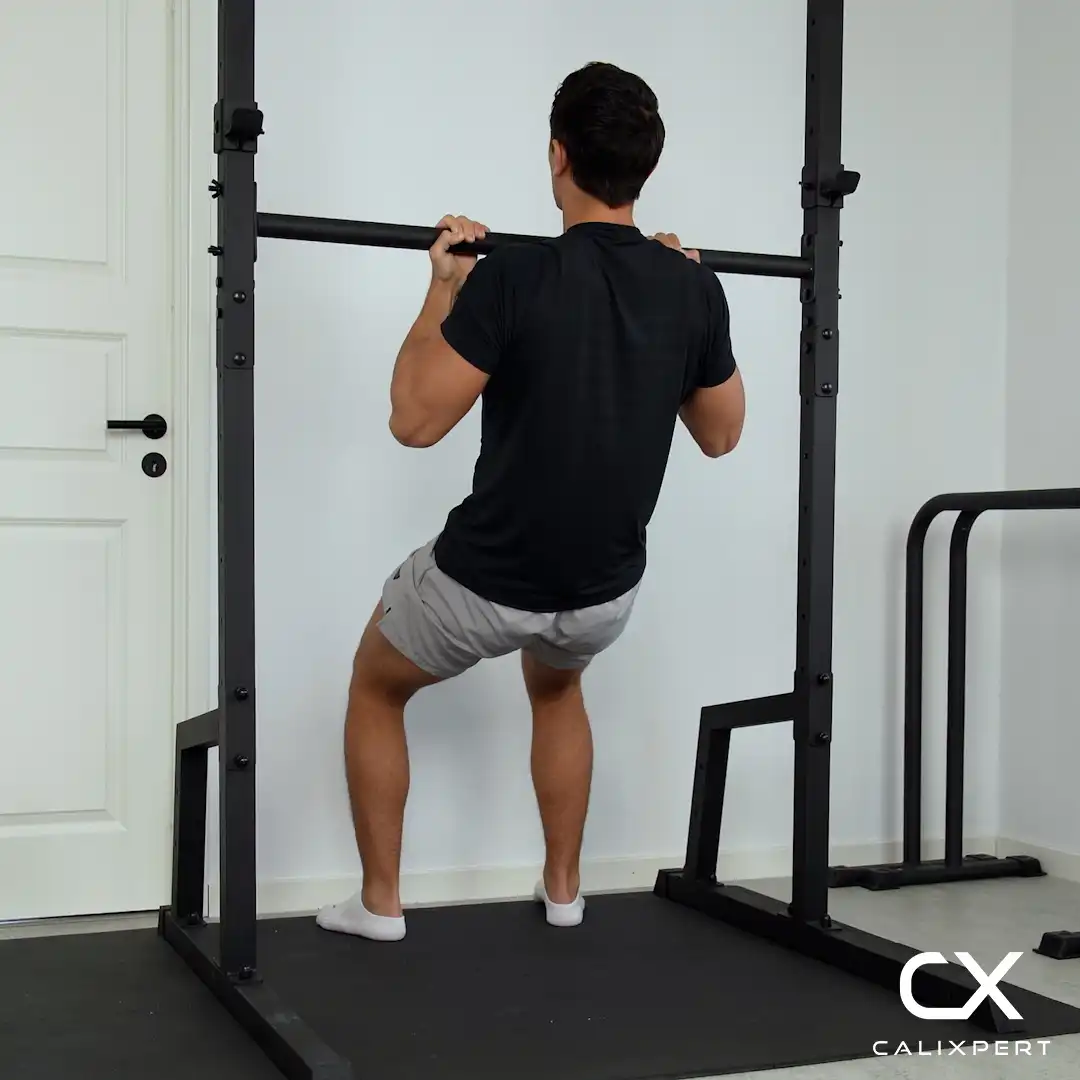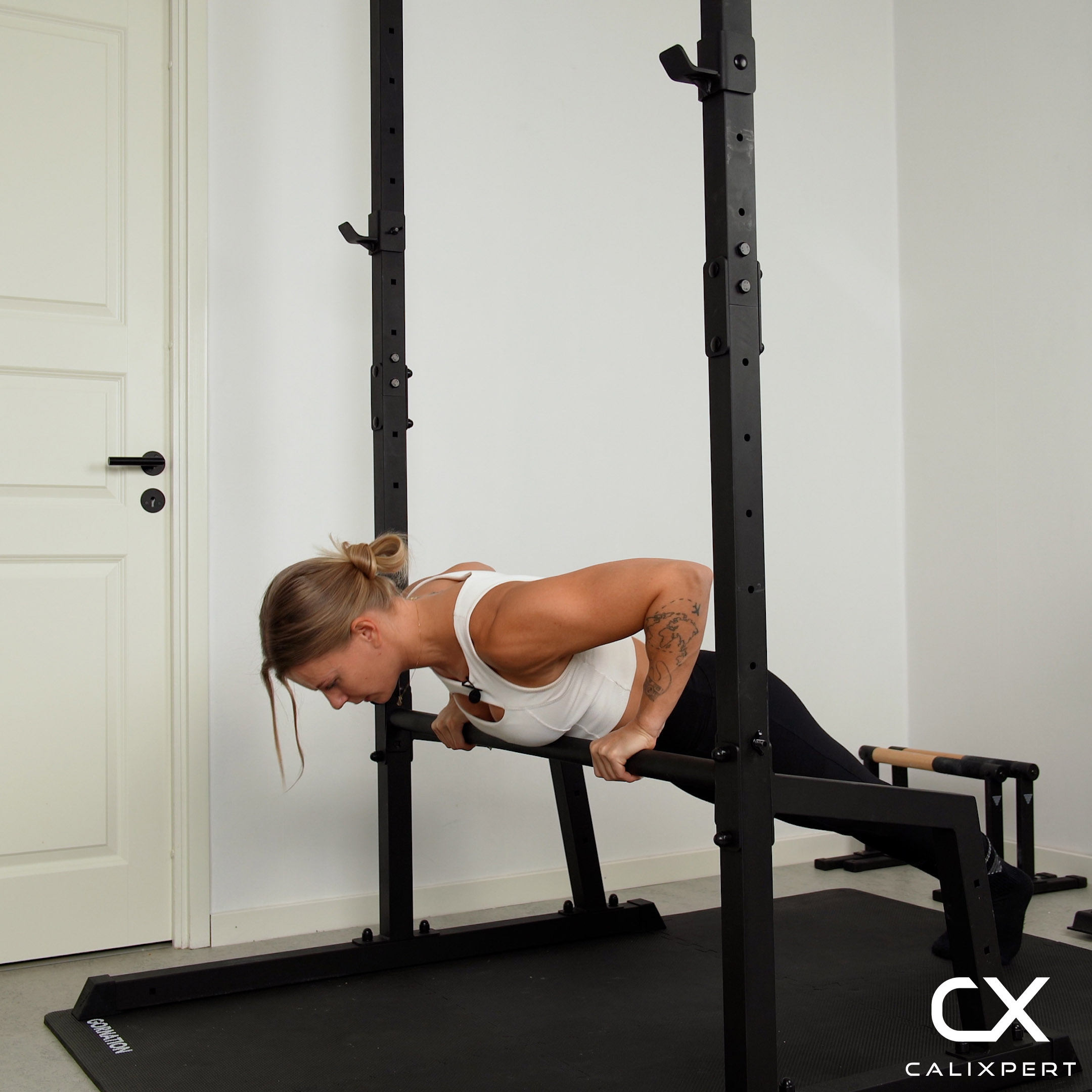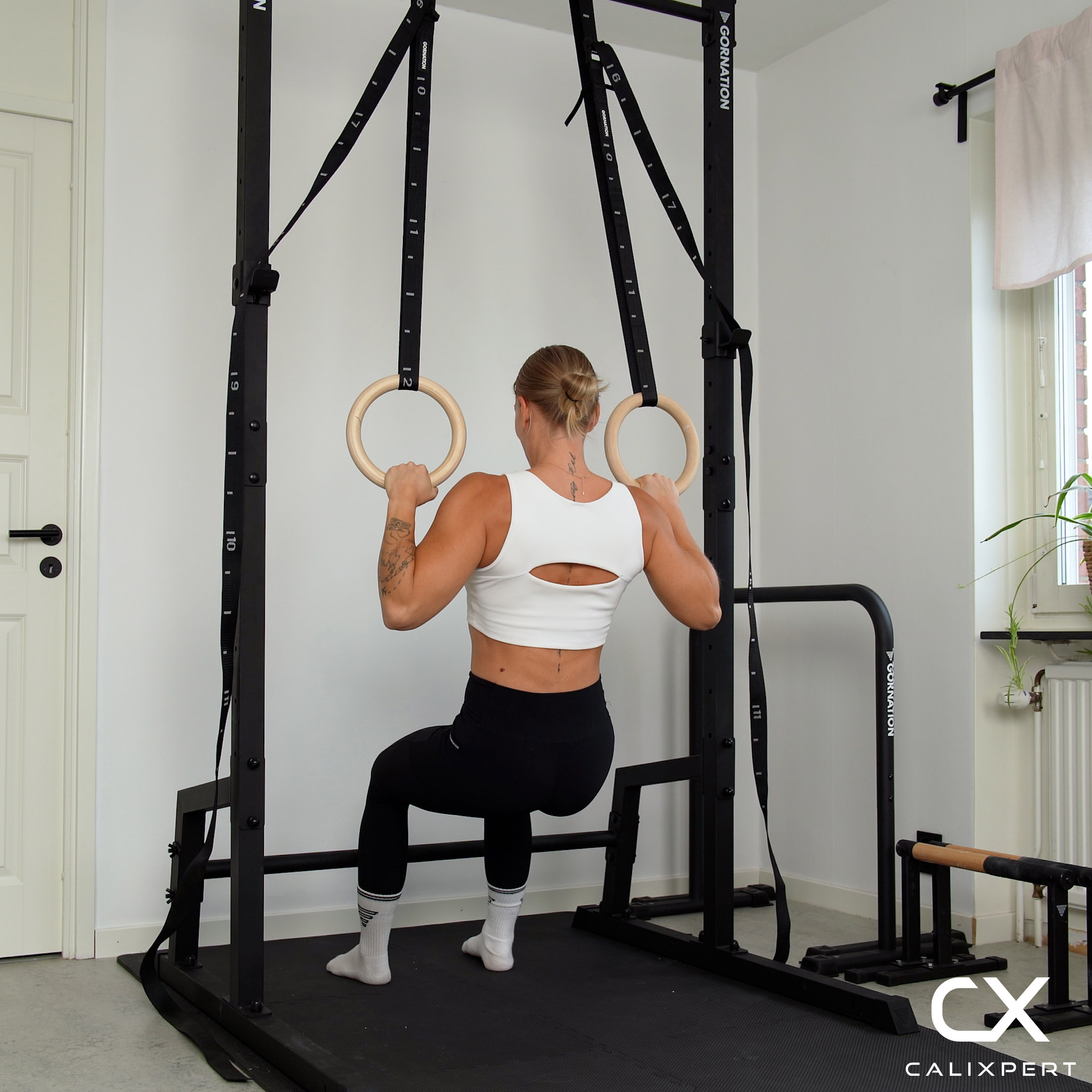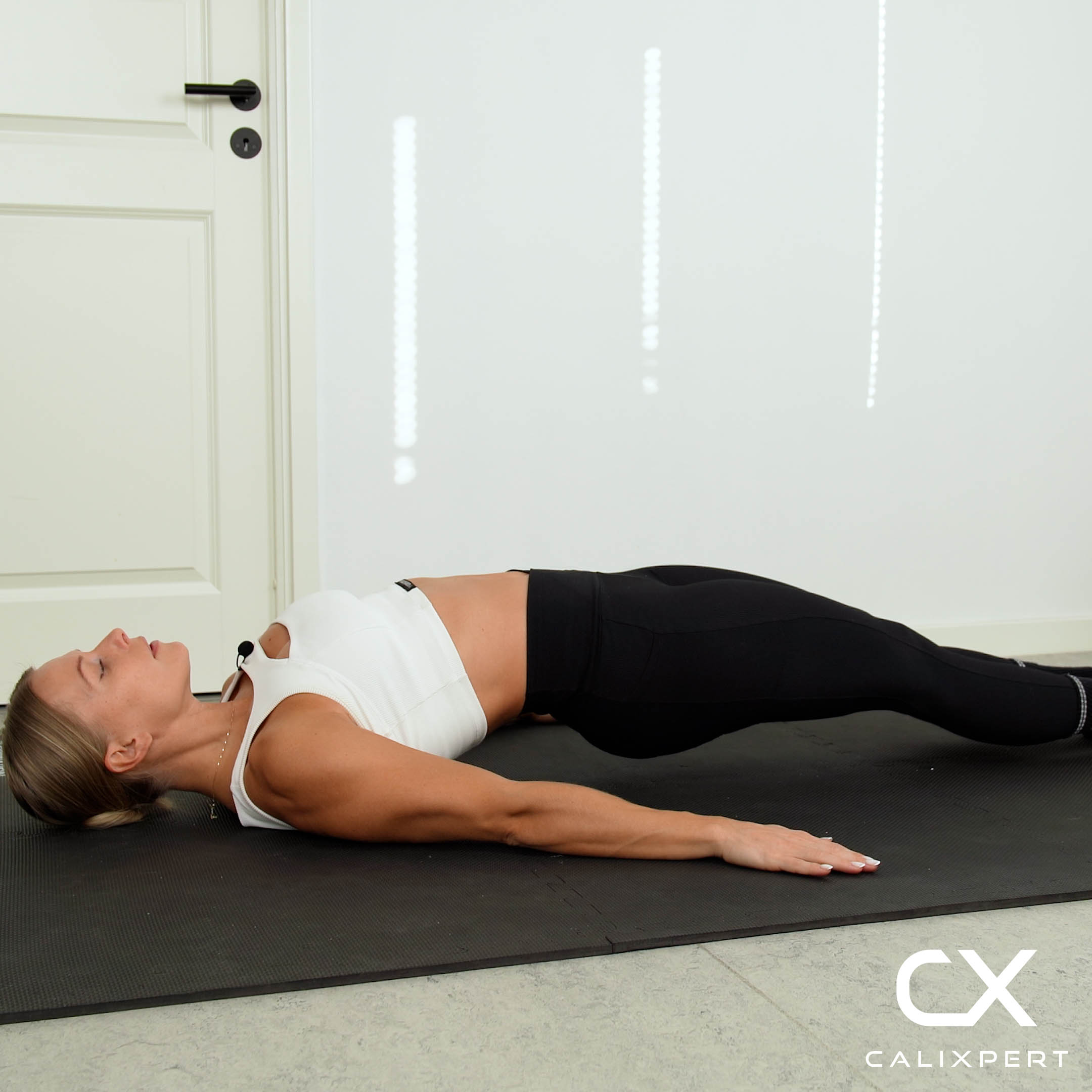How to Do Negative Pull-Up
Negative pull-ups are an excellent exercise for building the strength needed to perform full pull-ups. They focus on the eccentric phase of the movement, helping to develop the muscles in your back, shoulders, and arms.
Step By Step Guide to Properly Execute Negative Pull-Up
- Starting Position
- Use a sturdy pull-up bar. Stand on a box or bench to reach the bar, and grip it with your palms facing away from you, hands shoulder-width apart.
- Execution
- Jump or step off the box to get your chin above the bar, holding yourself in the top position of a pull-up.
- Top Position
- Hold the top position briefly, ensuring your chin is above the bar and your body is stable.
- Lowering Phase
- Slowly lower yourself down in a controlled manner until your arms are fully extended. Aim for a 3-5 second descent.
Benefits of Negative Pull-Up
- Builds strength in the back, shoulders, and arms.
- Improves grip strength and endurance.
- Helps in progressing to full pull-ups.
- Enhances muscle control and coordination.
Common Mistakes to Avoid
- Dropping too quickly: Focus on a slow, controlled descent to maximize muscle engagement.
- Not using a full range of motion: Ensure your arms are fully extended at the bottom of the movement.
- Swinging or using momentum: Keep your body stable and avoid using momentum to lower yourself.
Follow these steps and tips to master Negative Pull-Ups with proper form and efficiency.
FAQ About Negative Pull-Ups
Negative pull-ups are like practicing the "coming down" part of a pull-up. You start at the top and slowly lower yourself down. This helps your muscles get stronger because they work hard to control your body as you go down. Over time, this makes it easier to do a full pull-up, where you go up and down. It's like training wheels for pull-ups.
Negative pull-ups help you get stronger by focusing on the part where you slowly lower yourself down. They're great for building muscle and improving your pull-up skills, especially if regular pull-ups are too hard right now. It's like practicing the easy part first to get better at the whole thing!
To improve your pull-up strength with negative pull-ups, aim to do them 2-3 times a week. Ensure you have rest days in between to allow your muscles to recover. Start with 3-5 sets of 3-5 reps, focusing on a slow, controlled descent. Gradually increase the number of reps or sets as you get stronger. Consistency and proper form are key to seeing improvement.
To do negative pull-ups with proper form:
- Start at the top of a pull-up by jumping or using a step.
- Keep your chin above the bar and engage your back and core.
- Slowly lower yourself in a controlled motion, taking 3-5 seconds.
- Keep your shoulders engaged to avoid dropping too fast.
- Fully extend your arms at the bottom before resetting.
Control is key for strength gains.








.webp)






































.webp)




















































